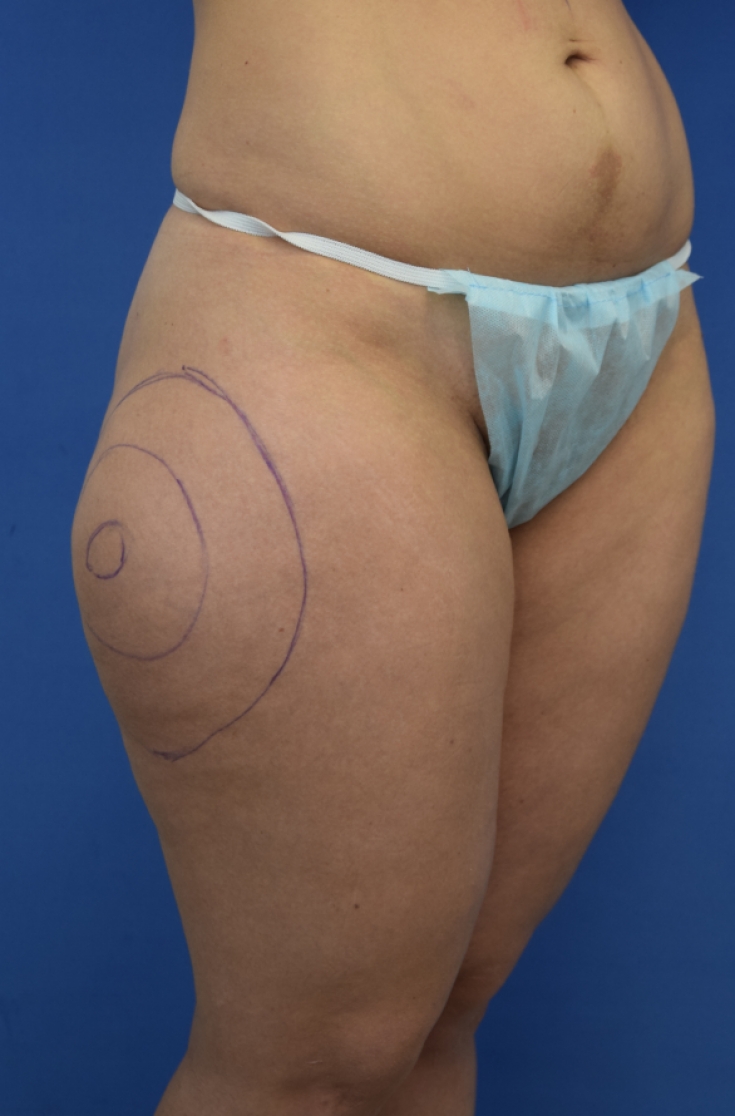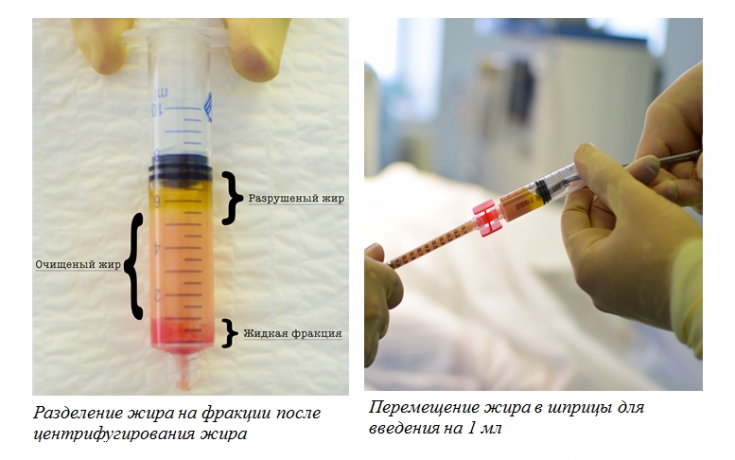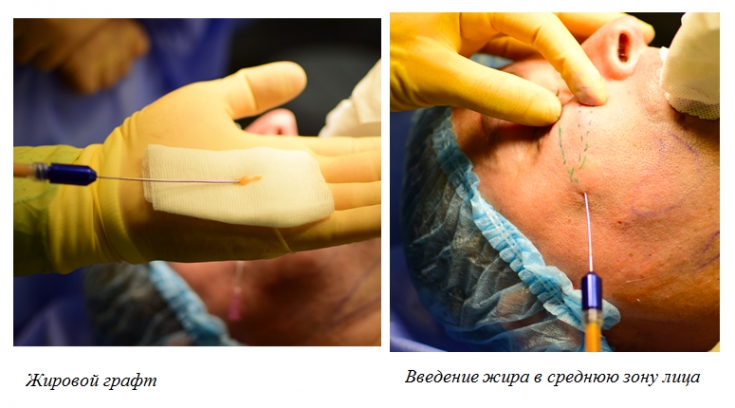Lipofilling – This is a procedure that is gaining popularity every year. Fat grafting provides not only replenishment of the volume lost with age, but also due to the presence of stem cells and growth factors, promotes skin rejuvenation. This procedure is used to correct almost any part of the body. Lipofilling of the cheekbones, buttocks and chest is especially popular. Many patients need to increase the cheekbones due to the fact that over the years the middle zone of the face loses volume and undergoes ptosis. Lipofilling makes it possible to significantly rejuvenate the patient's face and radically improve its appearance. The head of the Nove Tilo plastic surgery clinic, candidate of medical sciences, surgeon of the highest category Oleg Timofey spoke about the technique of this procedure for estet-portal.com.
The main features of the lipofilling procedure
In 1979, Dr. Y.Illouz performed the world's first successful liposuction using a vacuum fat extractor and cannulas. This operation very quickly took root in the practice of plastic surgeons, but soon the question arose – how to apply the removed fat. This is how lipofilling arose, which involves taking fat from the donor zone of the body and transferring it to the recipient. This procedure became possible due to the fact that fat tends to take root in a new place.
A good blood supply to the recipient area is a prerequisite for successful lipofilling.
It is difficult to say what percentage of fat survival, but the numbers range from 40 to 60%. Worst of all, fat takes root in people who smoke, because of their chronic vasospasm, which worsens the nutrition of fat. Also, survival rates are worse in patients with microcirculation disorders, for example, with diabetes or endarteritis. Scars and very mobile areas, such as lips, are predicted to be poor for survival.
Lipofilling or hyaluronic acid fillers: which is better
When large-scale corrections are required, at the Nove Tilo Clinic we prefer lipofilling, if only because its use is more cost-effective. Also, the introduction of a large amount of hyaluronic acid is fraught with the development of fibrosis. Of course, hyaluronic acid is a very good drug when it is administered in small quantities. Therefore, we work with her when we need to fill in fine wrinkles. Another advantage of lipofilling – it is that fat grafting provides not only volume replenishment, but also promotes skin rejuvenation due to the effect of growth factors.
Technique for cheekbone lipofilling
For effective lipofilling, a plastic surgeon needs to follow a certain algorithm that will achieve the best results and avoid complications.
1. Marking the correction zone;
Before the operation, we make sure to outline the recess that we plan to fill with fat. It looks like a drawing of a contour map.

2.Search for fat collection area;
It is imperative to discuss with the patient from which area the fat will be taken. In places of its excessive accumulation, liposuction is best performed, since in this case, during the procedure, fat cells are less injured.
The best areas for fat collection are the abdomen, the outer or inner thighs and the inner knee. Sometimes, if the patient is too thin, or if we need a large amount of fat, we will take it from several areas.
For example, we need about 600 ml of pure fat to correct the breast or buttocks, but to obtain them, we need to take about one and a half liters of exfusate (this is a mixture of fat, buffer solution, blood, etc.).
As a result, after washing and cleansing it, we get the 600 ml we need, 300 ml of which will be injected into each breast or buttock.
3. Liposuction;
Through a small puncture 2-3 mm long in the umbilical region, fat is taken into syringes using a cannula with a diameter of 2 mm and a length of 15 cm.
Specifically, for lipofilling of the cheekbones, we need 6-12 ml of pure fat, therefore, given the presence of waste during fat settling, we need to take only 20-30 ml of fat (exfusate).
NB Fat must not come into contact with air!

4. Centrifugation;
When injecting fat into the chest or buttock area, we do not centrifuge it. We can just wait until it settles in order for the separation of the liquid fraction to occur. For more targeted lipofilling, when introducing fat into the cheekbones or nasolacrimal groove, we must definitely centrifuge it. This is necessary to completely separate the liquid in order to be able to accurately determine the true amount of fat.
A little trick – to increase the survival of fat, it is recommended to mix it with PRP-plasma, which additionally stimulates the work of fibroblasts and the synthesis of collagen and elastin fibers, promotes neovascularization.
After centrifugation, all the necessary fat is on the surface, and water is collected at the bottom, and at the very top is a strip of lysed fat - destroyed fat cells. Thus, we remove this upper part and water, leaving only the middle fraction, which, in fact, consists of viable fat cells. Besides! The lower half of the middle fraction has the best engraftment, due to the presence of a larger number of preadipocytes there.

5.Transfer of fat into syringes for direct lipofilling;
We transfer the fat from the large syringes in which it has been centrifuged into the 1 ml syringes we use for the facial area. In the clinic "Nove Tilo" for lipofilling we order special disposable syringes with luer lock screw-in needles. This allows the needle or cannula to be securely fixed during the procedure so that it does not fly out under high enough pressure.

6. Injection of fat in the required area;
Very delicately, we inject the fat with an 18-20 G cannula (up to 1 mm in diameter) into the required area, which we identified before the operation. For one pass of the cannula 7 cm long, no more than 0.5 ml of fat should be injected. Otherwise, there is a risk of a fatty cyst, which will need to be punctured.
7.Healing and rehabilitation.
Punctures in the facial area are self-healing within two days. After lipofilling, we literally put one or two stitches at the liposuction puncture site, since the cannula for fat collection is wider. After that, we apply elastic bandages, and on the same day we let the patient go home. It is necessary that the patient appears to us again after 2 weeks, and then after 2-3 months, so that we can evaluate the final result of the correction.

Lipofilling: before procedure, marking, after correction
In recent years, the procedure of lipofilling has become especially popular. Plastic surgeons around the world use lipofilling not only as a separate technique, but also in combination with other procedures.









Add a comment